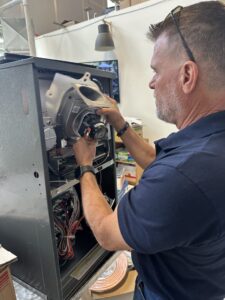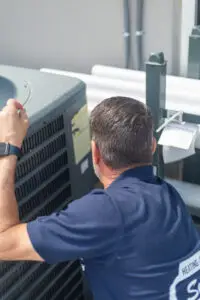Don’t Get Fooled by “Pretty” Homes: What Contractors Know About Hidden Real Estate Costs (Based on a contractor’s firsthand experience)
When it comes to buying a home—especially one that’s been recently “updated”—many buyers think they’re getting a good deal if the interest rate looks appealing and the house appears move-in ready. But as any experienced contractor will tell you, looks can be deceiving.
Behind that fresh paint and new laminate flooring might be outdated systems, costly inefficiencies, and hidden repair bills waiting to happen. From HVAC systems running at half efficiency to electrical hazards behind the walls, these are the real costs that can turn a dream home into a financial nightmare.
TL;DR: How Homebuyers Get Taken Advantage Of
-
Low interest rates don’t always mean a good deal. A 3.99% seller-financed rate can mask $50,000 in needed repairs.
-
Cosmetic updates hide expensive problems. Pretty kitchens and fresh paint can distract from old HVAC, plumbing, and electrical systems.
-
Utility bills matter. Inefficient heating and cooling can cost hundreds monthly—eating away at “savings” from a lower mortgage rate.
-
Know what really adds value. Upgrades like efficient HVAC systems or electrical overhauls pay you back—granite countertops don’t.
-
Always get a professional inspection. Have a trusted contractor evaluate what’s behind the walls before you make an offer.
The Illusion of the “Perfect Rate”
Many buyers get drawn in by seller-financed properties offering low rates—like 3.99% when the market average is much higher. On paper, it looks like a win. But if the house is old and poorly updated, those “savings” quickly evaporate when you start paying utility bills and repair costs.
A 1940s home with outdated mechanical systems might require $30,000–$50,000 in upgrades—furnace, air conditioning, water heater, and electrical. Even if you finance these costs with promotional 0% offers, you’re still spending money you didn’t plan on.
👉 Pro Tip: Always calculate total ownership cost, not just your mortgage. Include projected utilities, maintenance, and system replacements.

What’s Behind the Paint?
Here’s how many “updated” homes trick buyers:
-
Kitchen & floors: Recently remodeled, looks beautiful.
-
HVAC: Outdated 10 SEER air conditioner that costs $300/month to run.
-
Furnace: Claimed “90% efficiency” but actually operating closer to 70% due to improper installation and age.
-
Water heater: Old and inefficient.
-
Electrical: Overhead service lines, outdated panels, no upgrades for modern loads.
-
Siding & insulation: Aging materials that don’t hold up against current efficiency standards.
The visual updates make the home feel fresh, but none of these cosmetic changes improve comfort, efficiency, or safety.
“Granite countertops don’t come with monthly bills. Your furnace and air conditioner do.”

The True Cost of “Cheap” Homes
Even if you buy below market value or with a great interest rate, you’re still paying for the home’s performance long-term. A $50,000 difference in energy systems, utilities, and repairs can cancel out any short-term savings.
Example:
A buyer falls for a 3.99% rate on an old house, paying full market price. But they’ll:
-
Spend $300/month on cooling.
-
Replace the HVAC and water heater within 2 years.
-
Upgrade electrical service to meet code.
After everything, they could’ve purchased a newer, energy-efficient home at a higher interest rate—but with lower long-term costs.

Why Contractors See Things Differently
Contractors know where to look for hidden costs—behind the drywall and beneath the flooring. They recognize when a “flip” skipped the essentials.
For homeowners who can self-perform repairs or source parts at cost, such a home might be a smart investment. But for most buyers, these unseen issues mean unexpected debt and stress.
A contractor’s advice:
-
Prioritize function over finishes. A modern hybrid HVAC system or electrical upgrade adds long-term value.
-
Negotiate based on real condition. Don’t pay full market price for a home needing major system replacements.
-
Consult both your real estate agent and a contractor before making an offer.
The Hidden Role of Utilities in Foreclosures
During the 2008–2009 housing crash, many foreclosures weren’t just due to bad loans—they were triggered by unsustainable utility bills. Massive homes with two outdated HVAC systems cost $500+ per month to cool. Homeowners simply couldn’t keep up.
Even today, homeowners with old equipment often resort to swamp coolers or space heaters to save money—sacrificing comfort and safety.
Smart Investments That Pay You Back
Before you sink thousands into cosmetic renovations, focus on upgrades that actually save money or improve livability:
| Upgrade | Average ROI | Benefit |
|---|---|---|
| High-efficiency HVAC system | 70%+ | Lower bills, better comfort |
| Electrical panel upgrade | 60% | Safety, modern compatibility |
| Water heater replacement | 50–60% | Energy efficiency |
| Insulation and air sealing | 80% | Reduced heating/cooling costs |
| Whole-home air purifier (like Reme Halo) | 60% | Healthier indoor air quality |
Key Takeaway
When buying a home, look past the granite and paint. Focus on the systems that keep you safe, comfortable, and financially secure. A lower interest rate won’t help if your house bleeds money through inefficiency.
Prioritize the essentials—and work with a contractor before you buy.